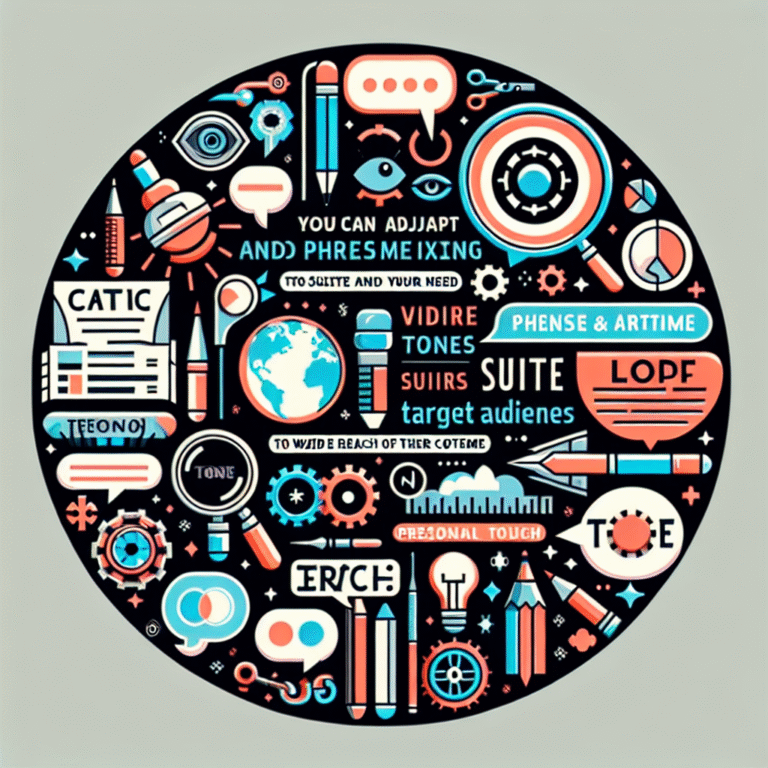
The Ultimate Guide to Engaging Your Audience: Writing a Psychology Research Paper that Captivates
Introduction
In the realm of academia, writing a research paper can often feel like navigating through a labyrinth. It’s not just about presenting data or analysis; it’s about capturing your audience’s attention and holding it long enough for them to absorb your ideas. This guide will explore how to engage your audience: writing a psychology research paper that captivates. By incorporating engaging techniques and insights from psychology, we can transform what could be a dry presentation of facts into a compelling narrative. Let’s dive in.
The Essence of Engaging Writing
What Does "Engaging" Mean?
Engaging writing draws the reader in, making them feel connected to the content. In a field like psychology, where concepts can get technical, your goal is to convey complex ideas in a manner that resonates with your audience. It’s not just about the content; it’s about how that content is communicated.
Why Engagement Matters in Psychology
Engagement is crucial in psychology because the subject often deals with profound human experiences. When you write a psychology research paper, you aim not only to inform but also to inspire your readers to think critically about the implications of your work.
Structuring Your Paper for Maximum Impact
Introduction: Set the Stage
Your introduction is your first impression—a chance to hook your reader. Start with a powerful quote, an intriguing question, or a surprising statistic related to your topic. For instance:
"Did you know that approximately 70% of people believe they are above average in their ability to communicate?"
This hook leads into a discussion of the importance of communication in psychology, setting the tone for the rest of your paper.
Literature Review: Contextualizing Your Research
An effective literature review articulates what existing research says about your topic. Here, you can engage your audience by summarizing key findings in an accessible manner. Consider using tables to compare and contrast different studies, highlighting their methodologies and findings.
Table 1: Comparison of Key Studies on Communication Skills
| Study | Participants | Findings |
|---|---|---|
| Smith et al., 2020 | 150 college students | 70% felt they had above-average skills |
| Johnson, 2019 | 200 professionals | 55% reported communication issues at work |
This clear presentation helps readers quickly grasp essential information.
Methodology: Transparency is Key
Your methodology should be detailed yet easy to follow. By explaining your process transparently, you invite your audience to understand and trust your findings. Use visuals like flowcharts to illustrate your research design.
Crafting an Engaging Narrative
The Power of Storytelling
Incorporating storytelling into your writing makes your paper memorable. For example, if you’re discussing a psychological phenomenon, narrate a brief scenario that illustrates it. This brings abstract concepts to life.
Case Study: The Bystander Effect
To illustrate the bystander effect, you could describe a realistic situation: imagine a busy street where a person collapses. Most passersby fail to intervene, lost in their own worlds. This anecdote pulls the reader in and establishes a relatable context for examining the phenomenon.
Analysis: The use of a real-life scenario demonstrates the relevance of psychological concepts, making them tangible and easier to understand.
Clear, Concise Language
While scholarly writing often leans towards the complex, it’s essential to prioritize clarity. Use jargon sparingly, and when necessary, provide definitions. Remember, the goal is to engage your audience: writing a psychology research paper that captivates requires language that is approachable and clear.
Effective Conclusions: Leaving a Lasting Impression
Conclude by summarizing your main points and reiterating the significance of your findings. Invite your readers to reflect on the implications of your research for future studies or real-world applications.
Enhancing Engagement with Visuals
Infographics and Graphs
Visual aids can make your data more digestible. Whether it’s through bar graphs, pie charts, or infographics, visuals can clarify trends and relationships.
Chart 1: Communication Skills Perception
Percentage of Participants Self-Reporting Communication Skills
- Above Average: 70%
- Average: 20%
- Below Average: 10%
Incorporating Multimedia Elements
If possible, include links or QR codes to videos, podcasts, or other sources that can further illustrate your points. This interactive element can increase engagement significantly.
Best Practices and Tips for Writing
Know Your Audience
Understanding who will read your paper shapes your content and tone. Tailor your writing style to meet the expectations of your audience—whether they are academics, students, or casual readers.
Personal Touch
Adding a personal anecdote can enhance connection. For instance, sharing your journey into psychology or how a particular research question resonated with you can establish authenticity.
Revisions: The Power of Feedback
Don’t underestimate the value of peer review. Getting an outside perspective can help identify areas of improvement and enhance overall readability.
Conclusion
Writing a psychology research paper that captivates your audience is a blend of content mastery and effective delivery. By employing storytelling, visuals, and a clear structure, you can make your findings not only informative but also engaging. Remember, the ultimate goal is to foster understanding and encourage further exploration of psychological topics.
Actionable Takeaway
Engage your readers by crafting narratives from your data, utilizing visuals, and presenting your insights in a relatable manner. As you set out to write your next paper, remember: how to engage your audience: writing a psychology research paper that captivates is within your reach.
FAQs
1. What is the importance of engagement in academic writing?
Engagement keeps readers interested and allows for better retention of information presented in your paper.
2. How can storytelling enhance my research paper?
Storytelling makes abstract concepts relatable and more memorable for the audience.
3. What role do visuals play in engaging my audience?
Visuals simplify complex data and help convey your message more effectively, enhancing understanding.
4. How can I tailor my content for different audiences?
Be mindful of your audience’s background; adjust the complexity of your language and explanations accordingly.
5. Why is peer review important in academic writing?
Peer review provides critical feedback and helps ensure clarity, enhancing the overall quality of your paper.
By following these strategies, you can effectively learn how to engage your audience: writing a psychology research paper that captivates!


















